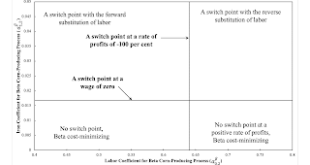Figure 1: A Parameter Space1.0 Introduction I have been reconstructing some of my examples. The first example in this post is from here. I am thinking of writing a draft article, as mentioned here. While I am at it, I thought I would also work through the examples in Garegnani (1966) and Bruno, Burmeister & Sheshinski (1966), both from the symposium in the Quarterly Journal of Economics of that year. 2.0 The Emergence of the Reverse Substitution of Labor This section presents an...
Read More »Variations In Switch Points With Markups In The ‘Corn’ Industry
Figure 1: Variation of Switch Points with the Markup in the Corn Industry1.0 Introduction I have been re-creating some of my past analyses. The graphs in this post look a bit different because I impose a requirement that the relative markups sum to unity. 2.0 Technology Consider an economy which produces three commodities, iron, steel, and corn, with the technology specified in Table 1. Two processes are available for producing each commodity. The coefficients of production in a column...
Read More »Reswitching Pattern In Corn-Tractor Model
Figure 1: Variation in the Cost-Minimizing Technique with Selected Coefficient of Production This post reports on some work with Steedman's corn-tractor model. I have yet to find an instance of triple-switching. I have found a case of reswitching, though. Figure 1 above and Table 1 below show how switch points vary with perturbations of the labor needed to produce a bushel of corn in the corn industry with Type I tractors. Only one switch point exists in region 1. Around this switch point...
Read More »Wages, Employment Not Determined By Supply And Demand
1.0 Introduction I do not think I have presented an introductory example in a while in which an increased wage is associated with firms wanting to employ more labor, given the level of net output. This example is presented as a matter of accounting for a vertically integrated firm. Exact calculations with rational numbers are tedious in this example. I expect that if anybody bothers to check this, they would use a spreadsheet. As far as I can tell, Microsoft Excel uses double precision...
Read More »A Perverse Switch Point For Neoclassical Economics, Non-Perverse For Austrians
Figure 1: The Wage-Rate of Profits Frontier1.0 Introduction This post completes a demonstration that the economic life of a machine is independent of the capital-intensity of a technique. I here fill in the upper right of a two-by-two table. I have previously filled in the upper-left and lower right entries. And I also have an example for the lower left. 2.0 Technology Tables 1 and 2 present coefficients of production for processes which can be combined to produce a new output of corn....
Read More »Perverse Switch Point For Austrian Economics
Figure 1: The Wage-Rate of Profits Frontier This post continues a series of posts demonstrating that the change in the economic life of a machine at a switch point is independent of the change of the capital intensity of the technique at a switch point. I here fill in the lower left in a a two-by-two table. The wage curves above are for the an example with the same structure as in the previous post in this series.This is a 'one-good' model. The manager of firms know three processes to...
Read More »Traditional And ‘Perverse’ Switch Points For Austrian And Neoclassical Economics
Figure 1: The Wage-Rate of Profits Frontier1.0 Introduction This is one in a series of posts demonstrating that the change in the economic life of a machine at a switch point is independent of the change of the capital intensity of the technique at a switch point. I want to illustrate each entry in a two-by-two table in a previous post. The example in this post has two switch points. One fits the traditional Austrian and neoclassical stories, as in the entry in the upper-left of the table....
Read More »Variation On An Example From Schefold
Figure 1: Variation in the Economic Life of a Machine with Technical Progress This post varies the coefficients of production in an example from Bertram Schefold. I wanted to have 'nice' fractions at a time of zero. Qualitatively, this looks like a previous post. Reviewers for a recent rejection of an article with another fixed capital example objected to this type of model. I need to relate technical progress to a well-known type (Harrod-neutral, Marx-biased, or whatever) or produce some...
Read More »Austrian Economists Rediscovering Sraffa
Some recent papers by economists of the Austrian school rediscover some aspects of post-Sraffian price theory. Others would benefit from more knowledge of post-Sraffian price theory. But the authors do not know this. Fillieule (2007) is a rediscovery of Sraffa's standard commodity. He sets out a special case of Hayekian triangles in which an infinite series of datad labor inputs are used to produce current net output. "Only circulating capital is taken into account", and "the proportion...
Read More »A Parameter Space for an Example of Harrod-Neutral Technical Progress
Figure 1: A Two-Dimensional Parameter Space The above is for this example. I wish somebody would be inspired by this to write it up with mathematical proofs. What I see here is found by numerical methods. Figure 1 shows a partition of the parameter space based on fluke switch points. The dashed line shows the temporal path in the previous post. Each of the solid lines are parallel affine functions, with a slope of unity. A proof that these slopes are unity should be able to handle a model...
Read More » Heterodox
Heterodox








